
“Education is the most powerful weapon which you can use to change the world.”
— Nelson Mandela

“Education is the most powerful weapon which you can use to change the world.”
— Nelson Mandela
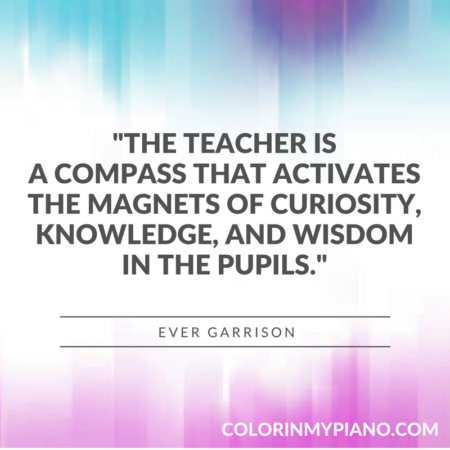
“The teacher is the compass that activates the magnets of curiosity, knowledge, and wisdom in the pupils.”
–Ever Garrison
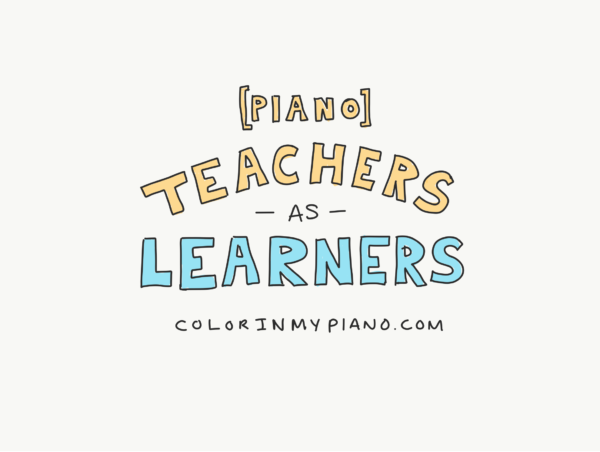
I remember my band instructor from high school as the type of teacher who is always working to improve their craft. It wasn’t unusual during any given rehearsal for him to introduce and implement a new teaching idea or learning activity he had picked up, whether from a book or colleague at a music educator’s conference.
He was a wonderful role model for us students. Even as a high schooler, I admired his choice to consider himself ever on a journey towards self-improvement as a teacher.
As a music educator myself today, I am on that same journey. I want to be — and am — the kind of teacher who is always learning, always trying something new, and always improving.
No matter how new or already-experienced I am at something, I prefer to take this approach of striving for self-improvement. As my pastor sometimes says: “It’s fine to be where you are. It’s not fine to stay there.”
Learning involves experimentation and “it might not work.” There might be failures or less-than-successes. Mistakes.
Learning also involves possibility. The possibility of being able to do something you couldn’t do before. The possibility of insight, new skill, more ease.
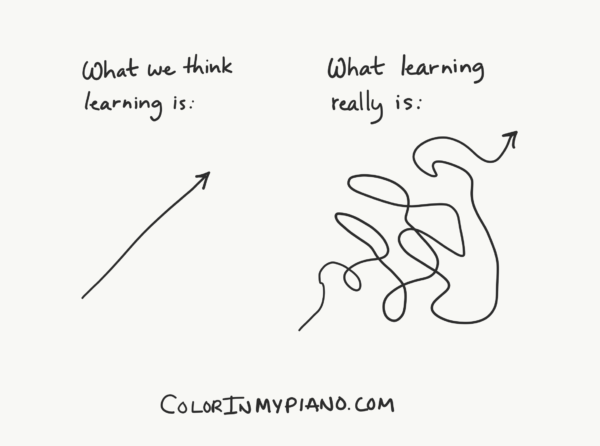
Even though it’s a messy process and doesn’t (normally) go in a straight line, I personally choose to find learning enjoyable. No matter the topic area, I’m interested in opportunities to learn new things — although at times I must make choices about what I have or don’t have time to devote energy toward.
I know I’m not unique in this regard. When I talk to other teachers, I often observe a similar mental posture. A positive energy towards new ideas. An openness to change and the possibility of being wrong.
We teachers tend to be learners.
This, most likely, is why we are teachers: we love the learning process.
My thought for the day is this:
Do we consciously model for our students what it means to be an eager learner? How openly can we demonstrate being the sort of learner we want each of our students to be? How can we display our open attitude towards change and improvement, as my high school band instructor did?
After all, such is the purpose of a teacher:
The ultimate goal of the teacher is not to create those who have learned, but to create learners.
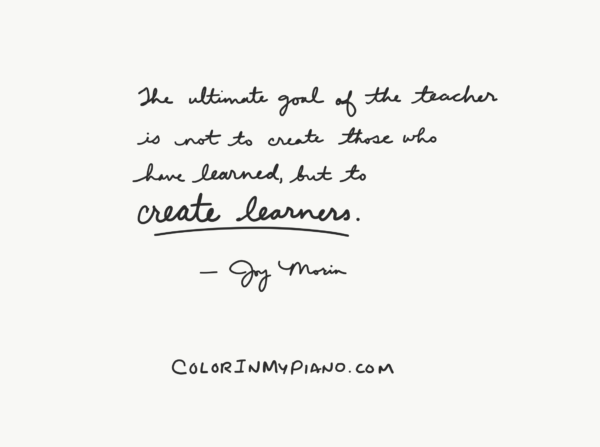
• • •
Leave a comment: How can YOU openly model for your students how to be a learner? And what new things are you currently learning in your endeavors?
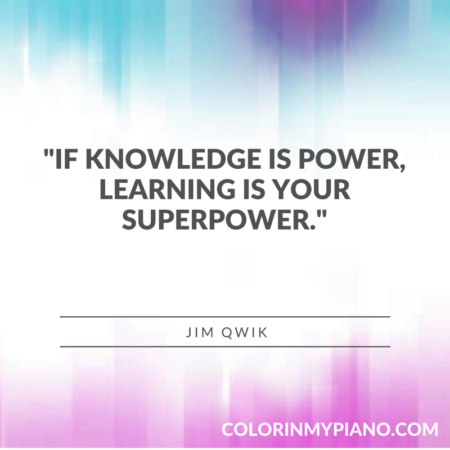
“If knowledge is power, learning is your superpower.”
–Jim Qwik
Last week, I asked: If you could somehow magically have the life of your dreams, what would your piano teacher life look like?
(Read the entire prompt here.)
Thank you for the responses you posted, both here on the blog as well as on facebook. I enjoyed reading them.
I pondered the questions myself, and even did a little bit of journaling on the topic. I found it very beneficial, and want to share some of my realizations with you. If you found it fun to ponder the previous set of questions, I’d like to invite you to join me in exploring the additional questions below.
As I journaled about my ideal piano teacher life, I realized I’m already doing many of the things that I would consider part of my dream life as a piano teacher. What a wonderful reminder: I’m already living the dream! At times, I need reminders to count my blessings and take nothing for granted.
As you consider your own ideal piano teacher life, ask yourself: Which of these things am I already doing?
I’m happy with my current teaching schedule. There isn’t much I’d want to change about my teaching space. I’m happy to have a career I enjoy so much. I have much to be thankful for.
As you recall, the original prompt encouraged us to think big: If you could somehow magically have the piano teacher life of your dream, what would it look like?
I hope you journaled at least one thing that was completely outrageous. 🙂 Continue reading “What We Can Learn From Considering One’s Ideal Piano Teacher Life”
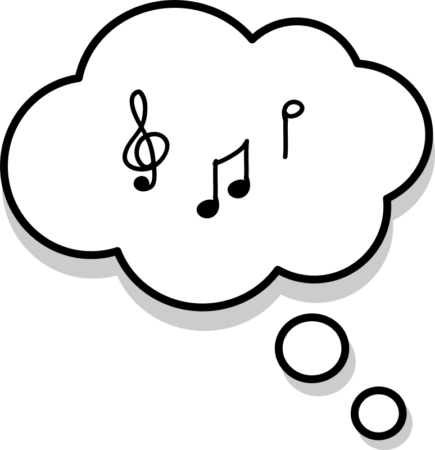 Today, I have a thought experiment to present to you. If you could somehow magically have the life of your dreams, what would your piano teacher life look like?
Today, I have a thought experiment to present to you. If you could somehow magically have the life of your dreams, what would your piano teacher life look like?
Let’s get really specific. Feel free to dream big here, folks!
Please share in the comment section below. I can’t wait to read your responses and talk about them further with you.
Hello, readers!
I’m so excited to share with you some photos from the three-day Piano Teacher Retreat I hosted earlier this month. 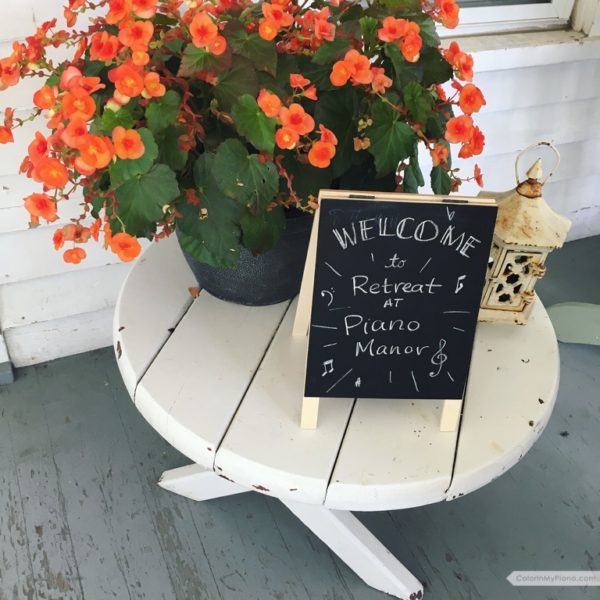
On Thursday the 17th, 12 piano teachers arrived for our retreat activities. They came from Ohio, Michigan, Indiana, Virginia, Ontario (Canada), …and even as far as Georgia!
Including my friend Amy Chaplin (who was in charge of delicious meals for us!) and myself, this added up to 14 piano teachers in “Piano Manor” — which is what my students and I fondly call my home studio. 🙂
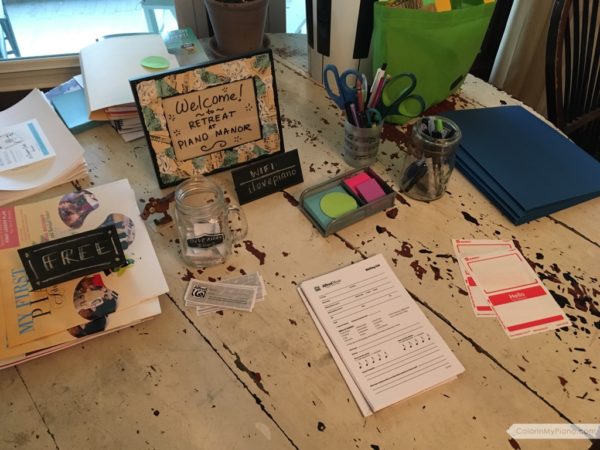
My chief goal with my Piano Teacher Retreat was to create a professional development experience with no single “expert” to learn from, but instead with all attendees collaborating and sharing their thoughts and experiences, toward the goal of growing together to become better teachers.
Don’t get me wrong: I love conferences, but if we really want to create an experience that results in the greatest amount of learning, we need to create learning experiences that very closely replicate the actual desired skill or behavior.
To that end, this was not a professional development experience where attendees sat in their seats and passively listened. Nope. At Piano Teacher Retreat, everybody participates. 🙂 All 14 of us kept busy through group discussion sessions, studying certain method books with a partner, and presenting our findings with the rest of the group. We were hands-on and interactive!
As promised, here are the other two composer lapbooks I created this summer. Adding these two new composers makes the list of available composers currently 24. Exciting!
 Studying Muzio Clementi is the perfect opportunity to talk about the evolution of the piano from harpsichord, to fortepiano, to modern piano. Clementi is remembered as a keyboardist, pedagogue, music publisher, and piano manufacturer. His compositions developed the techniques of the early piano to such an extent that he was called the “Father of the Piano.”
Studying Muzio Clementi is the perfect opportunity to talk about the evolution of the piano from harpsichord, to fortepiano, to modern piano. Clementi is remembered as a keyboardist, pedagogue, music publisher, and piano manufacturer. His compositions developed the techniques of the early piano to such an extent that he was called the “Father of the Piano.”  Russian composer Sergei Rachmaninoff was a 20th-century pianist, conductor, and composer, composing in the late-Romantic tradition. My students enjoyed learning about Rachmaninoff’s concert tours, recording contracts, incredible musical memory, and most well-loved compositions.
Russian composer Sergei Rachmaninoff was a 20th-century pianist, conductor, and composer, composing in the late-Romantic tradition. My students enjoyed learning about Rachmaninoff’s concert tours, recording contracts, incredible musical memory, and most well-loved compositions.
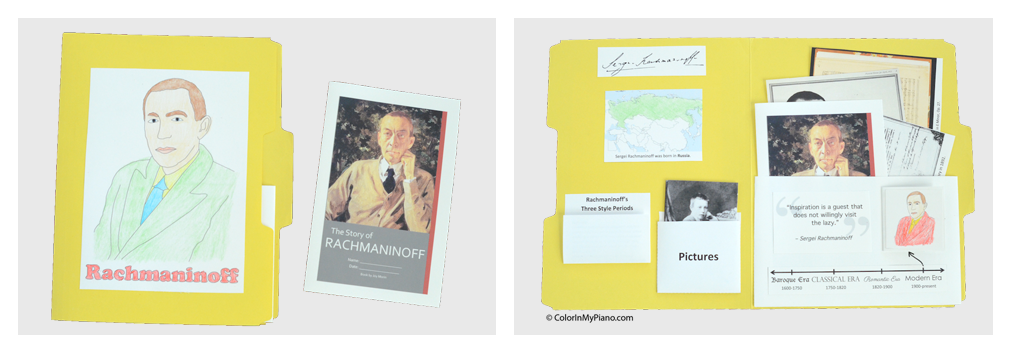 As I mentioned earlier, this curriculum is what I use for my Music History camps. This curriculum is great also for group classes (I use them occasionally at my monthly “Piano Parties”). Sometimes, I also print out only the biography booklet for students when they are working on a piece by a composer they aren’t yet familiar with. When writing the biography booklet, I did my best to be complete in representing the composer’s life and work, while writing it in a manner that is relatable and interesting students.
As I mentioned earlier, this curriculum is what I use for my Music History camps. This curriculum is great also for group classes (I use them occasionally at my monthly “Piano Parties”). Sometimes, I also print out only the biography booklet for students when they are working on a piece by a composer they aren’t yet familiar with. When writing the biography booklet, I did my best to be complete in representing the composer’s life and work, while writing it in a manner that is relatable and interesting students.
The lapbooking is intended to make the information come alive through pictures, visuals, and other interactive activities. I’m always amazed at how much information my students retain using this curriculum.
When you purchase the curriculum, you get a studio license permitting you to print from the PDF for use with your students as much as you like.
Thanks for reading! View the Great Composers & Their Music curriculum in the shop here.
I just have to share this fun, spontaneous moment from a piano lesson yesterday. Check out this video:
My student surprised me by showing me that he had learned to play The Office theme song. I, in turn, surprised him by pulling out my melodica. 🙂 I’ve been waiting a long time to be able to play that with someone!!
What is a melodica? It’s a cute little reed instrument that looks like a keyboard. I bought mine on Amazon (you can browse here) a few years ago. It is the instrument actually used for The Office theme song.
For the past two years, I’ve been using these “About Me” student profile cards. I’m always looking for ways for my students to see and get to know each other!
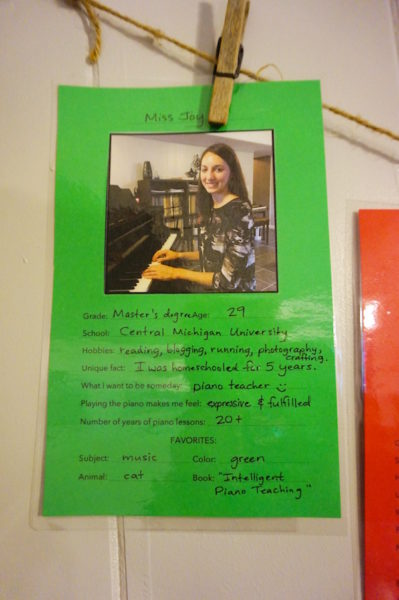
At the beginning of the school year, I printed the profile cards on colorful paper and we took time during lessons to fill them out with a felt-tipped marker. I took a photo of each student sitting at the piano with my iPhone set on the square crop setting. Later, I imported all the photos into a Microsoft Word document, resized each image to 3×3 inches, printed the document, and attached each cut-out photo to the profile cards with a circle of tape. As a final touch, I decided to laminate each profile card.
Displaying these in the studio helps build a feeling of camaraderie and being part of a team! (Wanna read more about team-building in the studio? Check out my friend Christina’s guest post on Amy Chaplin’s blog here.)
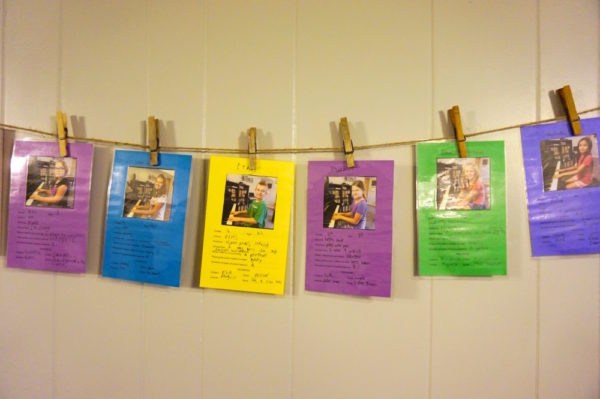
To hang the profile cards in my studio, I used clothespins and a length of twine string. I used adhesive Command Decorating Clips (you can buy these at Hobby Lobby or Michaels and use their weekly 40% off coupon available inside their app) to hang the string, instead of putting nails in the wall.
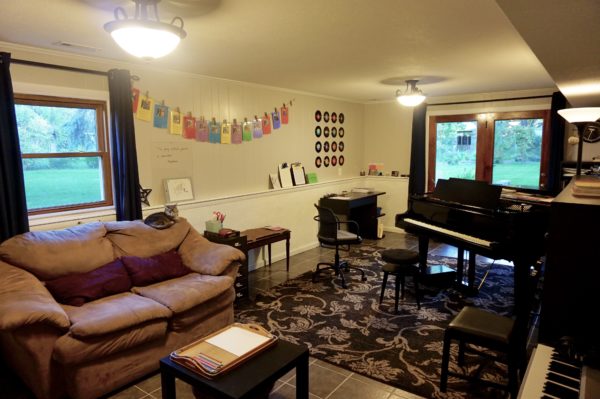
Here’s a photo from last year of the profile cards hanging in my previous studio space. I love the color they added to the walls. And parents and students always enjoy looking at them!
Feel free to download my “About Me – Student Profile Cards” on the Printables > Other Resources page.
 About Me - Student Profile Cards (118.8 KiB, 8,517 hits)
About Me - Student Profile Cards (118.8 KiB, 8,517 hits)
(Note: The favorite book of mine mentioned on the green profile sheet pictured should have been titled: “Intelligent Music Teaching” by Robert Duke. Excellent book! Read my review here.)
Big news:
I just added two brand new composer lapbooks to my shop!
The composers are…
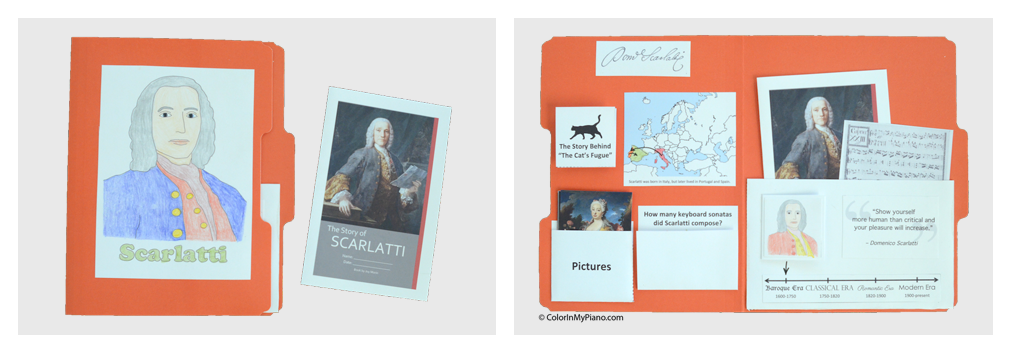
Domenico Scarlatti and…
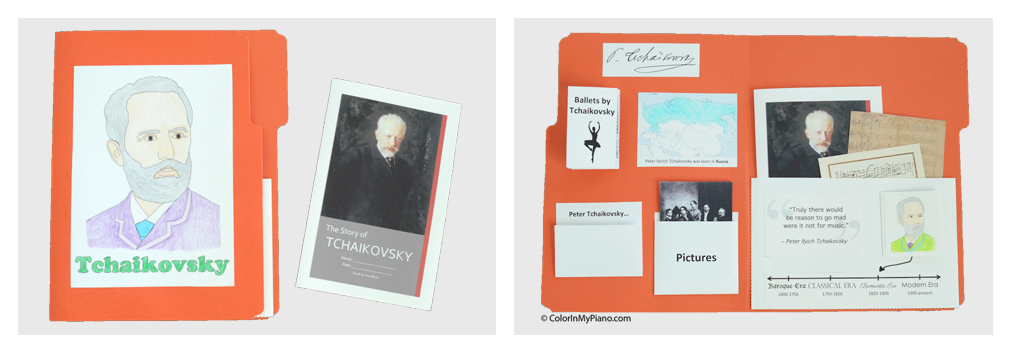
Peter Tchaikovsky!
In studying Scarlatti, we learned about how Scarlatti as a Baroque composer greatly influenced the development of the Classical style, especially in keyboard music. He taught the princess Maria Barbara of Portugal and followed her to Spain when she married to became Queen of Spain. Scarlatti is remembered today mainly for his 555 keyboard sonatas. We took particular interest in the sonata known as “The Cat’s Fugue.” 🙂
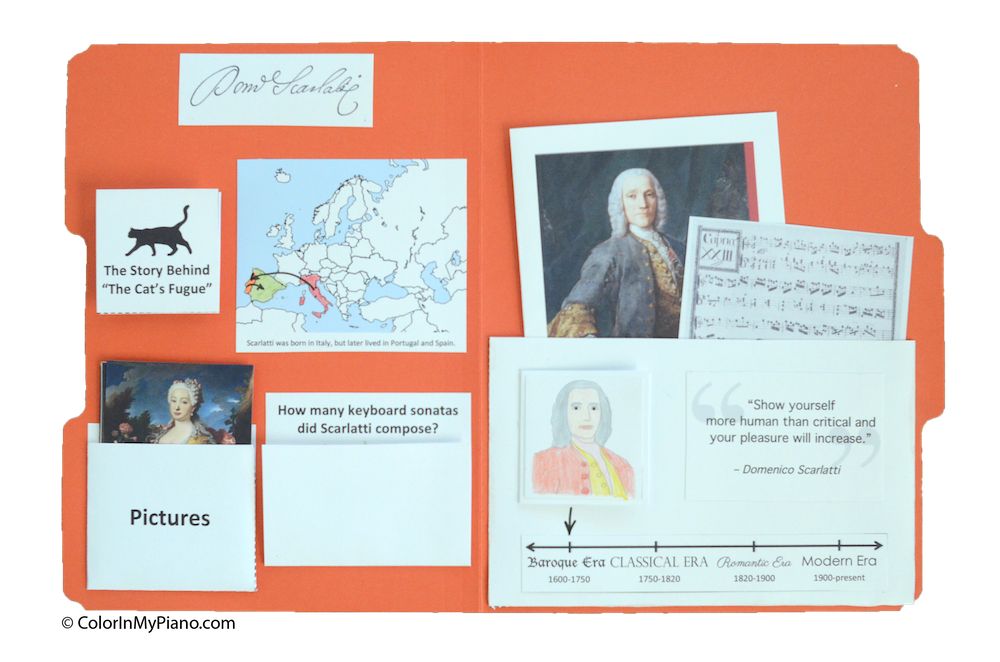
Tchaikovsky arrived at music as a career a bit later in life. We listened to excerpts from his most famous works, of course including the wonderful Piano Concerto No. 1 and the three ballets he composed: Swan Lake, The Sleeping Beauty, and The Nutcracker.
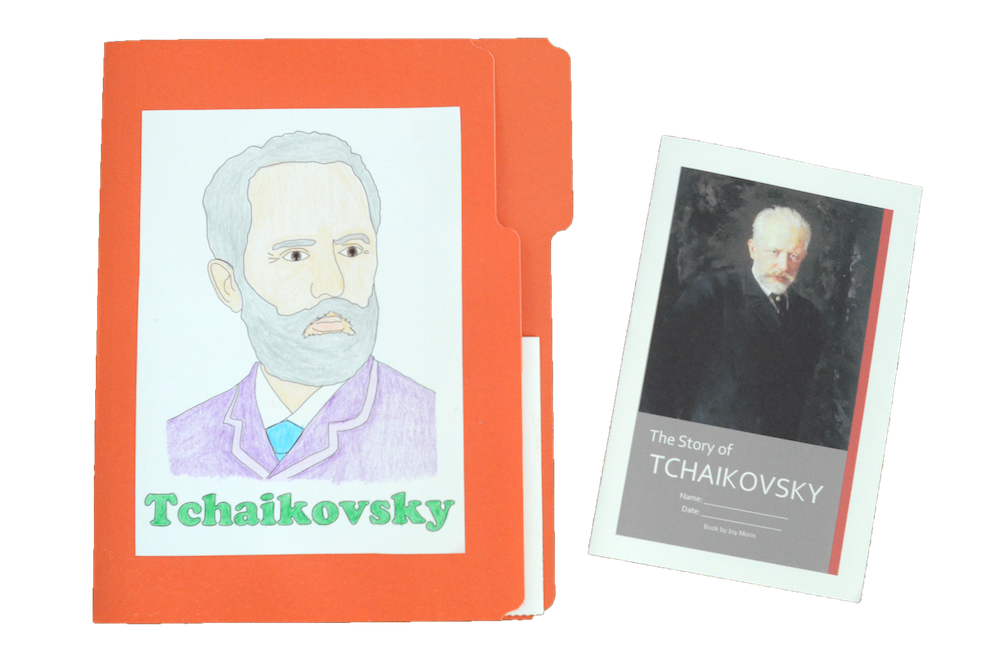
These are two of the four composers my students and I studied this summer during my 2017 “Music History Blast From The Past” camp (see the photos here). Sometime next week, I will have the other two new composers lapbooks listed in the shop. Stay tuned!
I just looked it up: Can you believe that I’ve offered a “Music History Blast From The Past” 4-day camp every single summer since 2012? I love offering this camp because I think that it’s so important for students to be exposed to great classical music and gain an sense of how music styles have evolved across the centuries. This experience is so helpful, especially as students begin playing classical repertoire at the intermediate levels. And they always enjoy learning about the composers’ lives, especially in a group setting.
Anyway, as I said: Stay tuned for the announcement sometime next week about two more new composers!
Learn more about the Great Composers & Their Music lapbooking curriculum here.
Hello, readers!
Just a quick post for today, encouraging you to check out my friend Susan Hong’s brand new website, SusanHong.com. I’ve had the honor of helping Susan out with her website and other technology-related topics for a few years now. She is not only a wonderful artist and piano teacher, but an all-around wonderful person and friend!
Here’s a picture of Susan and I, taken during the 2016 MTNA conference in her hometown, San Antonio, Texas!
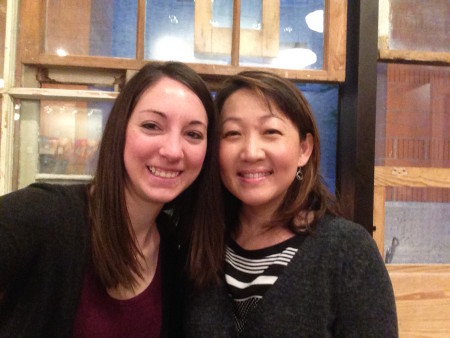
Susan has posted a few items of interest on her new website so far, but I would especially encourage you to check out her Musical Mandala Coloring Book PDF. When you purchase the download, you’re getting a studio license allowing you to print as needed for your own students. I’ve already downloaded and printed a few copies to place in my studio for my students to enjoy coloring in my waiting room area.
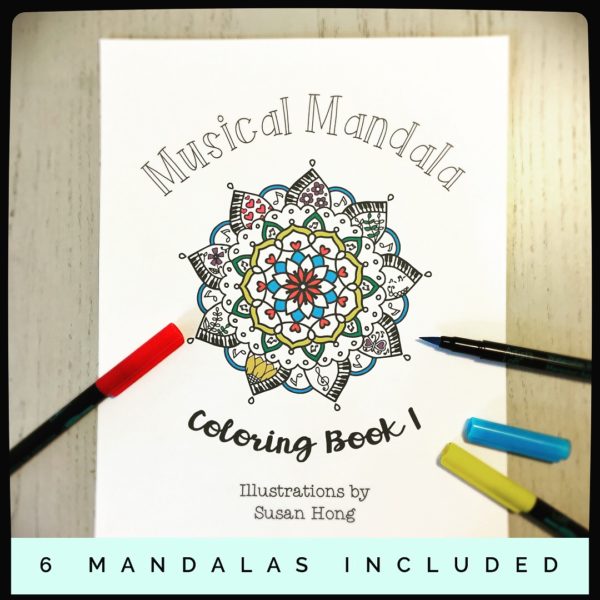
There’s a limited time sale going on now. Don’t miss checking out Susan’s mandalas by clicking HERE!
Your Cart is Empty